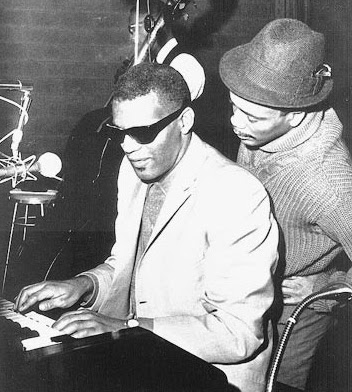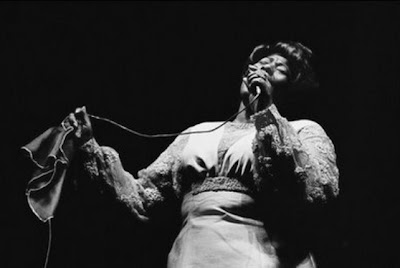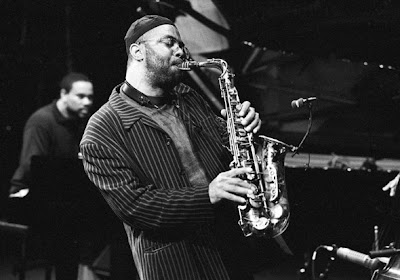African-American jazz has always sought to maintain its footing in the sociological reality from which it was born.
 |
Quincy Jones
|
 |
| Ray Charles and Quincy Jones |
Such was the significance of Quincy Jones'
Back on the Block,
which came out in 1990. Taking stock of this century as it nears its
end, Jones - Count Basie's former arranger and Michael Jackson's producer
at that time - assembled a few of the great names of Black American
music, from Ray Charles to Miles Davis, along with Ella Fitzgerald and
Dizzy Gillespie.
 |
Ella Fitzgerald
|
 |
| Geri Allen |
Soul music and rap welcomed jazz, as if to
remind it they grew up together in black churches and on the street.
From the delicate neo-classical touch of the pianist Geri Allen to the
fanfares of Lester Bowie (the Art Ensemble of Chicago's trumpet
player), along with the saxophonists Kenny Garrett (like Geri Allen,
trained in Detroit with the trumpet players Marcus Belgrave) or Gary
Thomas (discovered while with Jack DeJohnette and Miles Davis) - the
same concern with roots, the same attention to the latest developments
of funk, and openness of spirit that reflected the lifestyle and choices
of the sixties loft generation.
 |
| Lester Bowie |
 |
| Marcus Belgrave |
What do the following have it
common: Wynton Marsalis in his three-pieces suit, the rap group 2 Live
Crew with its obscenities, and the jazz that came forth in the sixties,
mixing the acquisitions of free jazz with the certainties of bop?
 |
Kenny Garrett
|
 |
| 2 Live Crew |
All belong to that same community - they were different reactions to
the mounting economic difficulties, the marginalization of the most
disenfranchised and the increase in the minority population in the
eighties.
____________________








No comments:
Post a Comment